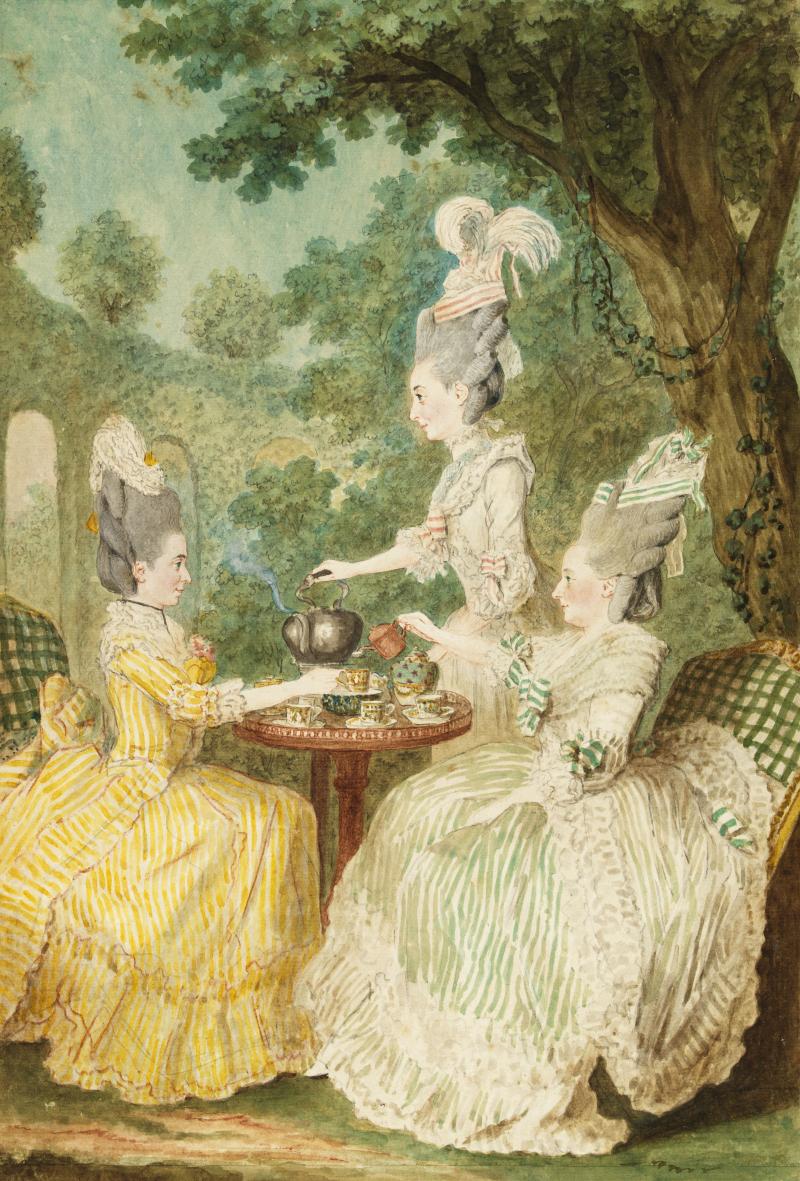
The Group for the Intellectual Life of the Department (GILD) routinely invites emerging scholars to give a lecture highlighting new directions in art history.
The Aestheticization of Sugar in Eighteenth-Century France
By the mid-eighteenth-century, France—by way of its exploitation of colonial holdings in the Caribbean—was the largest exporter of sugar across Europe and had developed a robust refining industry in French cities such as Orléans, Nantes, La Rochelle, and Bordeaux. Sugar had become an essential part of the middle to upper class French diet and was particularly essential to the adoption of novel and “exotic” beverages such as coffee, tea, and chocolate. New forms of porcelain, faience, and silver dining wares were invented to cater to this increasingly prevalent commodity. The confiseur (or “candy maker”) developed into its own profession, blurring the lines between art and craft as they transformed the tablescapes of eighteenth-century Europe into lavish French formal gardens. Confiseurs exploited the crystalline whiteness of refined sugar to fashion the main centerpieces of these multi-media surtout de tables, with white statuettes evoking both marble sculpture and novel porcelain figurines. At this same time, an inordinate amount of analytic and scientific efforts were exhausted on the subject of sugar refining as scientists, merchants, and refiners attempted to transform the raw materials of sugar cane into paragons of whiteness that could find credence and value within neo-platonic European moral and aesthetic codes. In this talk, I shall explore how the agricultural cultivation and refining process of sugar facilitated its use as a food worthy of elite editable consumption and as a sculptural material. Through the aestheticization of its whiteness, sugar—and, in particular, sugar sculpture—sheds light on the darker political and social ideologies of the Enlightenment, bearing witness to a society attempting to assert ideas of racial difference and hierarchy at a key moment of colonialist and imperialist expansion.
Alicia Caticha, Assistant Professor, Department of Art History, Northwestern University
Alicia Caticha (Ph.D., University of Virginia) is Assistant Professor in the Department of Art History at Northwestern University. She specializes in eighteenth- and nineteenth-century European sculpture and decorative arts with a particular focus on issues of materiality, colonialism, and popular culture. Her current research concerns the eighteenth-century French sculptor Étienne-Maurice Falconet and the replications and reverberations of his work in marble, porcelain, and sugar sculpture. She has published on the history of the decorative arts and fashion from the eighteenth-century to the present day in Journal18, The French Porcelain Society, Eighteenth-Century Fiction, and American Quarterly. Caticha’s research has been supported by the Center for the Advanced Study in the Visual Arts, the Decorative Arts Trust, and the Newberry Library.

Image caption: Louis Carrogis dit Carmontelle (1717-1806), Madame la marquise de Montesson, Madame la marquise du Crest et Madame la Comtesse de Damas pregnant le thé dans un Jardin, 1773. Musée Carnavalet, Paris.
